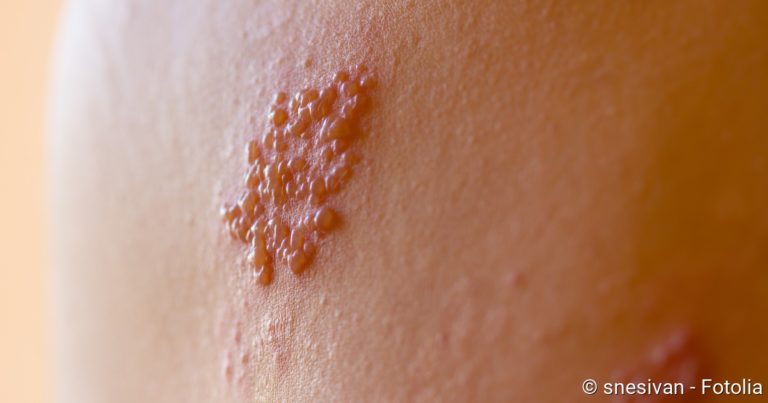Lyme disease symptoms: How to recognize the disease
Lyme Disease Symptoms
Lyme disease symptoms can vary greatly depending on the severity and stage of the disease (Source). Especially at the beginning of the infection, it is important to recognize and treat the signs reliably (Source). In this way, complications can be avoided (Source). In a late phase, the symptoms of Lyme disease are very diverse and therefore more difficult to interpret (Source).
Many infected persons do not develop any Lyme disease symptoms. (Source) The symptoms of the others are manifold. In many, but not all infected persons, the Borrelia bacteria multiply locally in the area of the entry point (colliery bite) and thus cause a wandering reddening of the skin. Doctors speak of erythema migrans.
Read here how you can recognize Lyme disease.
ICD codes for this condition are M01 G01 A68
For the complete study of Lyme disease, we have this article here. This article you are reading is a complete revision of Lyme disease symptoms.

Stages Of Lyme Disease
As we were explaining briefly above, many infected persons do not develop any Lyme disease symptoms. The symptoms of the others are manifold. In many, but not all infected persons, the Borrelia bacteria multiply locally in the area of the entry point (colliery bite) and thus cause a wandering reddening of the skin. This is erythema migrans.
In the further course of the disease – whether with or without the appearance of “wandering blush” – the borreliosis pathogens can gradually spread throughout the body via the bloodstream (“disseminate”). This means that in the course of the infection the Borrelia symptoms can change and worsen.
In the past, physicians used to differentiate between three successive stages of Lyme disease depending on the symptoms. In many cases, however, the disease does not follow the sequence of these stages. Instead, the different Lyme disease symptoms and forms of the disease can occur individually or in different combinations.
Therefore, in the meantime one distinguishes between the following in the course of Lyme disease:
- Early manifestations: Lyme disease symptoms that appear days to weeks (sometimes even a few months) after infection (such as “flushing”, acute/early neuroborreliosis)
- Late manifestations: Lyme disease symptoms that appear months to years after infection (e.g. Lyme arthritis, chronic/late neuroborreliosis)
Lyme disease: early manifestations
In the case of early manifestations of Lyme disease, physicians distinguish between an early localized stage (early occurring Lyme disease stage in the area of the entry point) and an early disseminated stage (Lyme disease symptoms of an early spread in the body).
Early localized stage
The most common of the Lyme disease symptoms of this phase of the disease is a typical reddening of the skin, the so-called Lyme disease migrans (erythema migrans). It appears about seven to ten days (3-30 days) after the infection and spreads in a circular pattern from the tick bite. In the course of time, it often becomes paler in the middle, so that it then looks circular. Its diameter is at least five centimeters.
If the wandering blush persists for several weeks or months, doctors speak of erythema chronicum migrans.
The reddening of the skin in Lyme disease can also be untypical. For example, it may not wander, not be borderline, look irregularly blotchy, or only appear on warmed skin. Doctors refer to this as an atypical erythema migrans.
Less frequently than the “wandering blush”, the Lyme disease lymphocytoma occurs in the early localized Lyme disease stage. This is a small, bluish-red skin nodule. It is caused by the enlargement or multiplication (hyperplasia) of certain defense cells of the immune system. It forms preferentially in the area of the nipples, in the genital area, on the earlobes or nasal wings. Children are particularly affected.
Early disseminated stage
Lyme disease symptoms, which are based on an early spread of the pathogens in the body, can affect various organs.
In the area of the skin, some affected persons develop the above-mentioned wandering redness in several parts of the body (multiple erythemas migrantia) and/or multiple skin nodules (multiple Borrelia lymphocytomas).
Non-specific signs of Lyme disease are also possible. These are general complaints, as they also occur with many other diseases. These include, for example, fatigue, slight fever, headache, muscle and joint pain, sweating, gastrointestinal complaints, and swollen lymph nodes.
Early neuroborreliosis symptoms
In some patients, the nervous system is affected at an early stage. This “early neuroborreliosis” typically manifests itself in an inflammation of the nerve roots of the spinal cord (radiculitis). Characteristic symptoms of this inflammation are excruciating nerve pain, which those affected describe as burning, drilling, tearing, or biting.
The pain occurs mainly at night and usually first affects the body part of the tick bite. In addition, unilateral or bilateral facial paralysis (facial nerve palsy) often develops as the infection spreads to the 7th cranial nerve. Sensations can also occur.
In children, early neuroborreliosis often manifests itself in facial paralysis alone or in meningitis. The latter can be recognized by a stiff neck, headaches, photophobia, nausea, and vomiting.
Lyme disease symptoms of other organs
In the early disseminated Lyme disease stage, an early (volatile) joint inflammation (Lyme arthritis) with painful joint swelling can also develop. More often, however, Lyme arthritis appears as a late manifestation of Lyme disease (see below).
It is rather rare to observe an infestation of the heart in the early disseminated stage of Lyme disease. Doctors then speak of Lyme carditis. Lyme disease symptoms in such inflammation of the heart are often cardiac arrhythmia. Under certain circumstances, breathing difficulties and chest pain may also occur.
Eye involvement is very rare in Lyme disease. Various parts of the eye can become inflamed, for example, the conjunctiva, the cornea or the optic nerve.
Lyme disease symptoms: late stages manifestations
Lyme disease symptoms, which appear months to years after the infection, are rare. They mostly affect the joints – in the form of chronic Lyme arthritis. Affected patients develop an intermittent or chronic inflammation of one or more joints.
Mostly the knee joints are affected, more rarely other large joints such as the ankle or elbow joint. Patients complain of pain and swelling in the joint area. The complaints can alternately subside and flare up again. They also often jump from joint to joint.
Inflammation of the small joints or sacroiliac joints (sacroiliac joints), as well as joint inflammation in the area of the axial skeleton, are not signs of Lyme disease.
Late skin borreliosis symptoms
Less frequently, late Lyme disease symptoms affect the skin in the form of chronic skin inflammation (acrodermatitis chronicica atrophicans). Older women are most frequently affected. The chronically inflamed skin is mainly found on the extensor sides of the arms and legs as well as on the fingers and toes.
At first the skin is reddened and swollen (infiltrative stage). Later it becomes paper-thin, hairless, sometimes shiny and wrinkled with blue-grey or bluish-violet discoloration and clearly visible veins (atrophic stage). Occasionally, bluish-red connective tissue nodes also form in places, usually near a joint.
Late neuroborreliosis symptoms
Very rarely a late (chronic) neuroborreliosis develops with a chronically progressive inflammation of the brain and spinal cord (encephalomyelitis). Possible Lyme disease symptoms are then, for example, gait and coordination difficulties, bladder disorders, paralysis of the arms and/or legs, speech and language disorders, and hearing problems.
Rarely, epilepsy, vascular inflammation in the brain, or an organic psychosyndrome occur in the context of late neuroborreliosis. The latter is accompanied by lack of concentration, loss of consciousness and hallucinations.
Not every infection leads to illness
Some people show no symptoms whatsoever, even though they have been proven to be infected with Borrelia bacteria. Not every infection causes Lyme disease symptoms.





